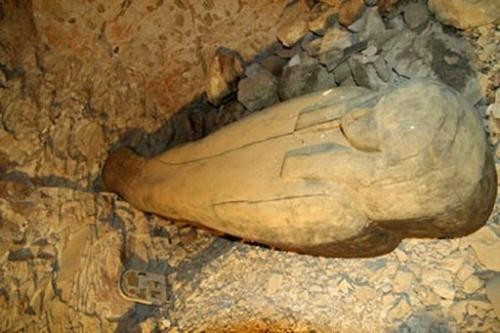Archaeologists Uncover 3,000-Year Old Tomb in Egypt, with Remains of Female Singer

A team of Egyptian and Swiss archaeologists have uncovered the tomb of a female singer, dating back 3,000 years, in the Valley of the Kings in Karnak, near Luxor, in Upper Egypt.
According to an official release by the Egyptian department of Antiquities, the new discovery was an accidental breakthrough by a team from Switzerland's Basel University. The team was led by Elena Pauline-Grothe and Susanne Bickel.
The tomb has been identified as that of a woman named Nehmes Bastet - a singer for the highest deity Amon Ra - during the period 945-712 B.C. The information was inscribed on a wooden plaque within the tomb. The singer was also recognized as the daughter of the High Priest of Amon. The artifacts found on site led the excavators to believe she sang at the Karnak Temple, one of the most famous and largest open-air sites from the Pharaonic era.
We were not looking for new tombs. It was close to another tomb that was discovered 100 years ago, Pauline-Grothe said.
The discovery is important because this is the first tomb unearthed from the historic Egyptian valley that has no lineage to the Egyptian royal family.
It is the only tomb of a woman not related to the ancient Egyptian royal families ever found in the Valley of the Kings, said Mansour Boraiq, the top government official for the Antiquities' Ministry in the city of Luxor, in an Associated Press report.
Boraiq further said the coffin was remarkably well preserved and added that when the coffin was opened (later this week), archaeologists will most likely find a mummy and a mask molded to her face; made from layers of linen and plaster.
At the time of her death, Egypt was ruled by Libyan kings but the high priests who ruled Thebes, which is now within the city of Luxor, were independent. Their authority enabled them to use the royal cemetery for family members, Boraiq explained.
Media reports quote Pauline-Grothe as saying the tomb was not originally built for the singer but was altered to accommodate her approximately 400 years later, based on artifacts found inside. The archaeologists do not know the tomb's original occupant.
Finally, the singer's name - Nehmes Bastet - indicates she may have been protected by the feline deity Bastet.
© Copyright IBTimes 2024. All rights reserved.





















